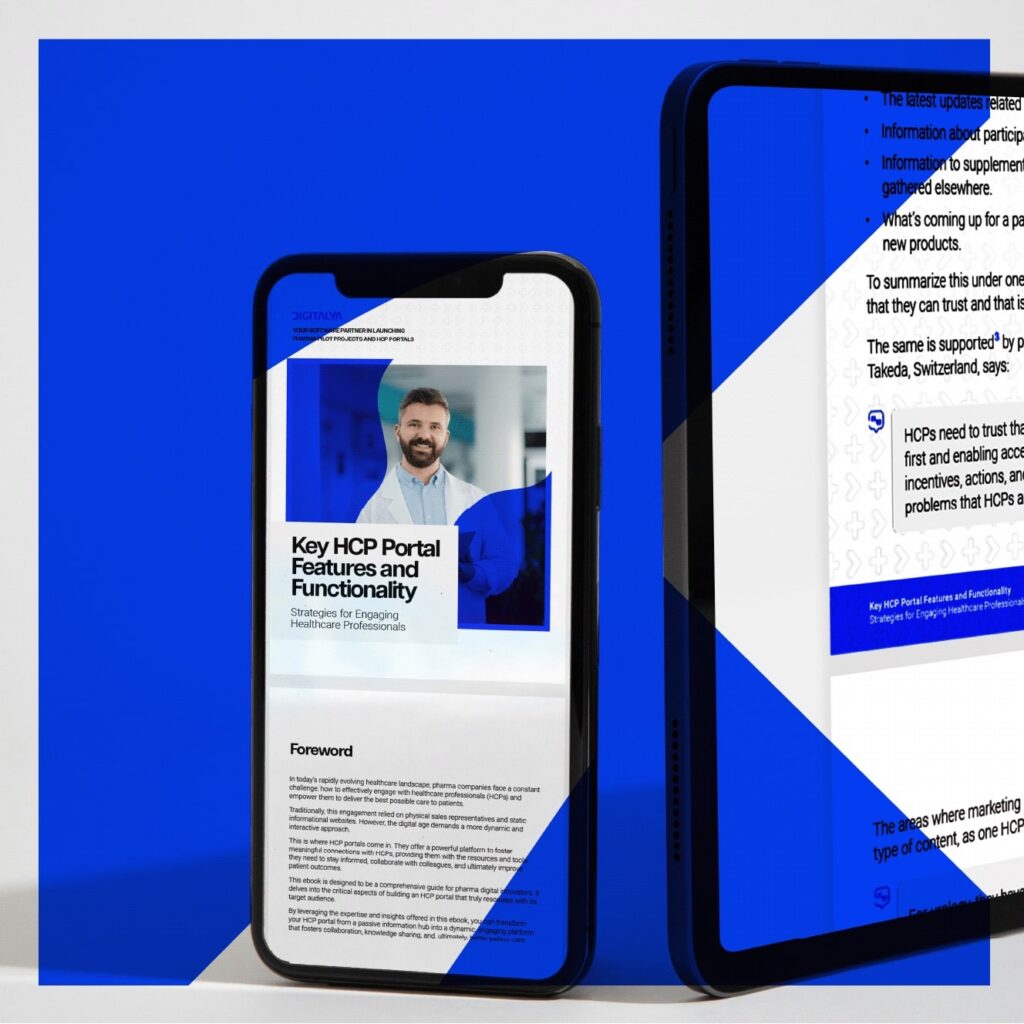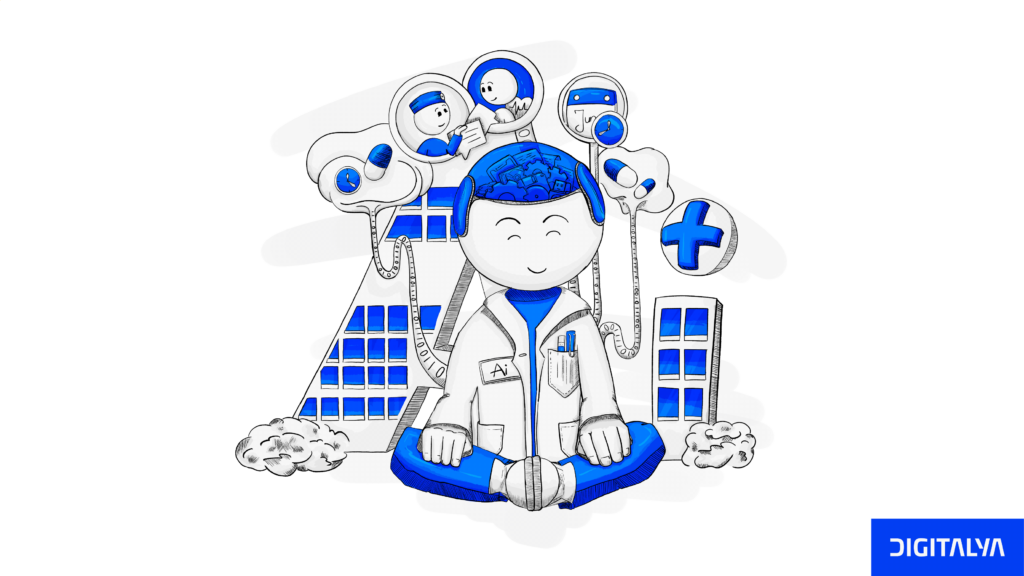The healthcare landscape is developing at lightning speed. Being patient centric and value-based is gaining prominence, and field force engagement is a powerful catalyst for driving transformation.
The traditional role of field force representatives, such as sales teams and medical experts, is growing beyond sales targets – it’s expanding to delivering holistic solutions, building relationships, and improving patient outcomes.
By engaging and empowering field force teams, a pharma company can reach its full potential and fuel a momentum toward a patient centric, value-driven future.
I. Introduction
1.1 What is Field Force Engagement in the Healthcare Industry?
In the pharmaceutical industry, field force engagement means the process of actively empowering field teams, like sales teams, medical experts, or customer support agents, to increase efficiency, productivity, and even job satisfaction.
These people play a crucial role in interacting with healthcare professionals, patients, and other stakeholders – becoming the face of the organization.
Field force engagement aims to create a supportive work environment that promotes collaboration, continuous learning, and customer centricity. It also focuses on providing the necessary tools, resources, and training to help field teams excel in their work and deliver great customer experiences.
As we’ve mentioned before, the concept of field force engagement is more than sales targets. It comprises strategies that bolster employee engagement, satisfaction, development of skills, and alignment with organizational objectives. It stresses the importance of building relationships, understanding the needs of the customer, and providing value-based solutions in a complex healthcare landscape.
As you might have noticed, field force engagement in the pharma industry is in alignment with broader industry trends – like the shift to patient centric care, value-based models, and the adoption of digital tools. This means that field teams can contribute more to the organization’s overall success.
1.2 Importance of Field Force Engagement in Driving Healthcare Transformation
It enables pharmaceutical companies to adapt to changing landscape better and achieve their goals – thus, force field engagement plays a significant role in driving healthcare transformation.
First of all, field teams are on the frontlines of interactions with healthcare providers and patients. Engaging them also means improving customer engagement. The shift toward patient centric care is vital to deliver better health outcomes.
Also, the healthcare industry is transitioning from volume-based to value-based models, emphasizing delivering high-value care. Field forces have a significant role in driving these initiatives since they communicate the value proposition of products, services, or solutions that align with value-based goals.
Relationship management with stakeholders and industry experts is also essential. Engaging with them can help an organization gain valuable field insights, identify unmet needs, emerging trends, and other opportunities for improvement.
In addition, the pharma field force is powerfully positioned for market access. Engaging them means organizations can collect data and feedback to help strategic decision-making, product development, and marketing planning.
Effective communication and alignment is another point where keeping the field force engaged brings vital benefits. By promoting efficient communication, knowledge sharing, and alignment with organizational goals, a pharma company can make sure that their field teams are well-informed, motivated, and working toward those objectives – ultimately driving healthcare transformation.
Field force engagement is vital to driving healthcare transformation. From customer relationships management to driving innovation, gathering market insights, and building relationships. This supports the overall transformation of the healthcare industry toward better patient outcomes, improved efficiency, and upgraded patient experiences.
2. Understanding Healthcare Transformation
2.1 What is Healthcare Transformation?
Healthcare transformation means a sweeping and fundamental change in the healthcare industry to improve the quality, efficiency, accessibility, and affordability of healthcare services. This means rethinking and redesigning the entire ecosystem – systems, processes, technologies, and policies – to address the evolving needs of patients, providers, and other stakeholders.
This includes digital transformation, which refers to the digital tech changes used to benefit society and the whole healthcare system. The latter must use digital tools for new solutions to enhance healthcare delivery and improve medical problems.
Healthcare transformation is vital in overcoming traditional barriers and limitations in care delivery by adopting novel approaches, leveraging advanced technologies, and adoption the patient centric and value based care models we’ve mentioned before.
The ultimate goal is to build a healthcare system that can deliver better patient outcomes and greater patient experiences with more optimized resource usage.
2.2 Key Drivers and Challenges in the Changing Healthcare Landscape
Let’s deep dive into what key drivers and challenges are shaping the way healthcare is delivered, managed, and experienced.
Let’s start with the key drivers.
- Technological advancements
The rapid advancements in digital tools, telemedicine, AI, data analytics, and genomics are propelling transformative changes in healthcare. With these technologies, we can expect improved diagnostics, better treatment outcomes, enhanced care delivery, and patient management.
- Shift to value-based care
We’ve mentioned this throughout the article a few times. It refers to transitioning from a fee-for-service model to value-based care, focusing on quality, outcomes, and cost-effectiveness.
- The aging population and chronic disease burden
This puts significant stress on the healthcare system. It also proves that this demographic shift requires organizations to develop new care models and services to address the needs of this category of people.
- Customer engagement and patient engagement
Patients taking a more active role in their healthcare seek access to information, personalized care options, and greater control over their personal information and health data. People are demanding more transparency, convenience, and personalized customer experiences.
- Regulatory changes
Changes like healthcare reform initiatives, privacy laws, reimbursement models, and quality metrics significantly impact the healthcare landscape. These policy shifts aim to improve access, affordability, and quality of care.
What about the challenges? Let’s list a few.
- Raising healthcare costs
Healthcare systems around the world are facing a significant challenge: escalating healthcare costs, from medical treatments to pharmaceuticals, technology, and even administrative expenses. This led to concerns about affordability and financial sustainability.
- Access to care
The disparities in access to healthcare services are still a significant challenge. From cultural barriers to socioeconomic factors and geographical location, many factors contribute to the disparities in care access, quality, and outcomes.
- Data security and privacy
Digitization means the security and privacy of patient health information are paramount – and a challenge. Healthcare organizations require robust cybersecurity systems to protect them from security breaches, ransomware attacks, or any kind of unauthorized access.
- Integration and interoperability
Achieving seamless integration and interoperability is still challenging. A lot of meaningful data is lost due to a lack of standardization, incompatible systems, or limited data sharing. This also hinders coordination and continuity, affecting patient outcomes in the end.
Addressing these challenges and key drivers means collaboration among healthcare stakeholders, policymakers, technology innovators, and patients. The next step is to see how force field engagement has a part in all of this.
3. The Role of Field Force in Healthcare Transformation
3.1. Field Force as Catalysts for Change
There are many ways in which field teams drive and facilitate transformative change. Let’s discuss some of them.
- Advocating for patient centric care
Field teams can be champions for the importance of customer centricity. They are a great way of educating healthcare professionals about the benefits of personalizing their approach and can encourage them to prioritize patient needs, preferences, and outcomes.
- Influencing healthcare providers
On the same note, force field representatives are in direct contact with healthcare providers. Therefore, they can be advisors – providing valuable data about innovative treatments, therapies, or technologies.
- Gathering insights from the field
Field forces are uniquely positioned to gather valuable information and feedback from the field. Because of their interaction with different stakeholders, they can find unmet needs, emerging trends, or challenges. These insights can significantly impact decision-making, innovation, and the development of a digital solution that addresses a real-world healthcare challenge.
- Driving collaboration and partnerships
In the same way they gather insight, field teams can forge partnerships and foster collaboration with healthcare providers, key opinion leaders, or other stakeholders. By actively engaging in these initiatives, like a clinical trial or clinical research, education programs, and improvement projects, they can drive change and contribute to advancements in care delivery.
- Supporting organizational priorities
Field force effectiveness also impacts organizational priorities and strategic initiatives since these teams can advocate for them. Communicating the vision, mission, and goals to stakeholders can reinforce the importance of driving change and contributing to the overall efforts.
- Adopting technology and digital tools
By leveraging digital platforms, remote communication tools, and data insights, field teams can improve collaboration and decision-making. This includes using a CRM system (customer relationship management), digital health applications, or data analytics tools to enhance engagement.
Force field representatives, through their influence, insights, partnerships, and digital solutions, can drive transformative initiatives and contribute to the overall advancement of care delivery. Their frontline perspectives and relationship management make them valuable change agents.
3.2. Shifting Focus: From Sales to Value-Based Solutions
Historically, field force effectiveness meant sales force effectiveness, meaning they primarily focused on selling commercial solutions, products, medications, or medical devices to medical representatives.
The key objective was to meet sales targets, generate revenue, and promote the features and benefits of what they were selling. However, with the rise of value-based solutions, the role of field force has gone beyond just sales.
These value-based solutions refer to an approach that goes further than the offered product or service. It includes understanding patients’ needs, challenges, and goals and aims to provide holistic solutions that deliver value in terms of outcomes, cost-effectiveness, and overall care quality.
The shift from sales-focused approaches to value-based solutions in the healthcare industry is a reflection of the shifting priorities and objectives of healthcare organizations. Field force representatives are now trusted advisors and partners, working together with providers to find and implement solutions to improve patient outcomes and raise cost-effectiveness and care quality. This is a transition that comes as a support of the industry’s broader movement towards customer centricity and high-value healthcare services.
4. Conclusion
We organized a webinar on Emerging Trends in Omnichannel – Field Force Engagement. We’d like to share some thoughts from one of our speakers, Mehrnaz Campbell, on the topic:
Pharmaceutical companies are at a critical juncture where they must adapt to the rapidly changing landscape. Standing still is not an option; the industry must shift gears and move forward quickly. To achieve this transformation, organizations must engage the hearts and minds of individuals at all levels.
Personalized communication is one of the most effective ways to initiate this shift. Companies should strive to make their field teams feel valued as individuals, ensuring that their preferences, dilemmas, and challenges are considered. Organizations can foster a sense of inclusion and create an environment conducive to change by tailoring messages and initiatives to resonate with each team member.
However, digital transformation goes beyond communication alone; it necessitates comprehensive change management. The first step in this process is establishing a shared understanding of the “why” across the organization. Leadership is responsible for effectively communicating the rationale behind the transformation, using compelling stories and narratives that evoke emotions and inspire everyone to unite behind the vision.
Leadership should strive to deliver comprehensive support to field teams through relevant, simple, and trustworthy training. It is crucial that this training is not a one-off event but an ongoing process, enabling the field teams to possess a well-defined roadmap for successful digital transformation. Similarly, just as we prioritize providing HCPs with the right information at the right time, we must extend the same level of commitment to the field force. We can facilitate digital transformation by providing the appropriate training at the right time.
Let’s face it; we are in it together. No one should feel like an outlier during this period of change. When the senior leadership team clarifies how the sales team fits into the new way of working and engages their hearts and minds with relevant training, it creates an environment that fosters learning and development. Sales professionals, known for their passion and emotional investment, will go above and beyond to deliver outstanding results when their dedication is acknowledged and nurtured. This is how we can foster autonomy whilst providing support.






